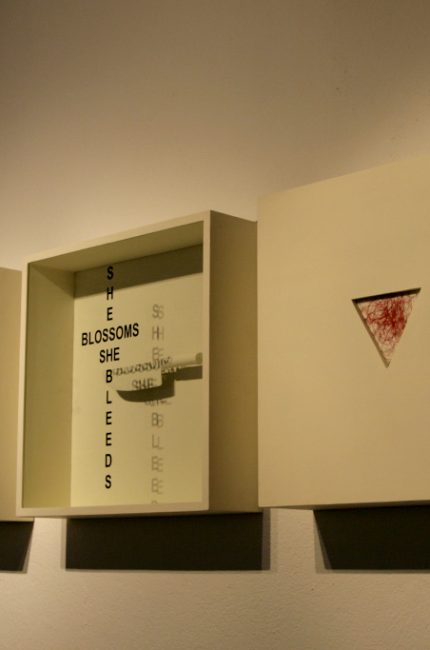In search of Nepalipann in contemporary art
KATHMANDU: There is no Nepalipann in these paintings”, “these works are too modern for Nepal” — comments like these about the ongoing exhibition of Sanjeev Maharjan and Sunita Maharjan at the Kathmandu Contemporary Art Centre (KCAC) in Jhamshikhel made Sangita Thapa, one of the Founder Directors of KCAC, raise a question — should contemporary Nepali art reflect Nepalipann?
To get an answer to this an art criticism and debate session on the exhibition was held at KCAC on September 5. Art critic Mukesh Malla, Sujan Chitrakar, Academic Programme Coordinator Kathmandu University Centre for Art and Design (KUart), artist Madan Chitrakar and Thapa were the panellists at the discussion.
Issues like do contemporary Nepali art require the presence of Nepalipann, the evolving of Nepali art in the last five decades plus indicators of Nepalipann in contemporary art were some of the topics discussed at the event.
“There is Nepalipann but how shall we look for it is the question,” said Malla who further talked about the effects of Western influence on art. He emphasised on bringing about changes in the schooling process itself. “If you talk about Paua art, the artist knows the technical aspect but not the philosophy behind it,” Malla added.
“Everything has to have a root, so we need to find the root of our Nepalipann,” he pointed out.
Meanwhile, Sujan Chitrakar expressed that in a multi-lingual and multiethnic nation like ours, Nepalipann is a rather abstract term. “It’s about visual form and if an artist works living in Nepal, there are bound to be Nepalipann in his creations,” he said.
Giving an example of Sanjeev’s collection on pigs he remarked, “We all have seen how pigs are sold, showcased and slaughtered on the streets here, so these paintings very much have Nepalipann in them.”
When asked, Thapa cited that Nepalipann is more of a “state of flux”.
According to Thapa, the phase from late 90s till now has been an interesting time for her since “artists in this time have been questioning the Nepalipann or the traditional practices like Asmina (Ranjit) questioned the whole way of treating women during menstruation. The questioning and challenging the existing society is what they are doing through their artwork.”
Another art critic Ramesh Khanal opined, “Artists should make their creations in their own style because their style is Nepalipann. Sanjeev has done exactly that and his paintings reminded me of my hometown Dharan.”
On the topic of indicators of national identity, Sujan Chitrakar pointed out two aspects of art — visual and psychological — and said, “To look for Nepalipann in visual representation is not right. Look for Nepalipann by going beyond the visual aspect of the painting.”
While the discussion was going on, Basanta Ranjitkar from the audience expressed his displeasure at the topic and said, “It is more of a political topic and artists should be kept out of politics.”
The issue of globalisation where not only Nepali artists are learning from the Western world, but Western artists are finding influences in Nepal was also discussed.


